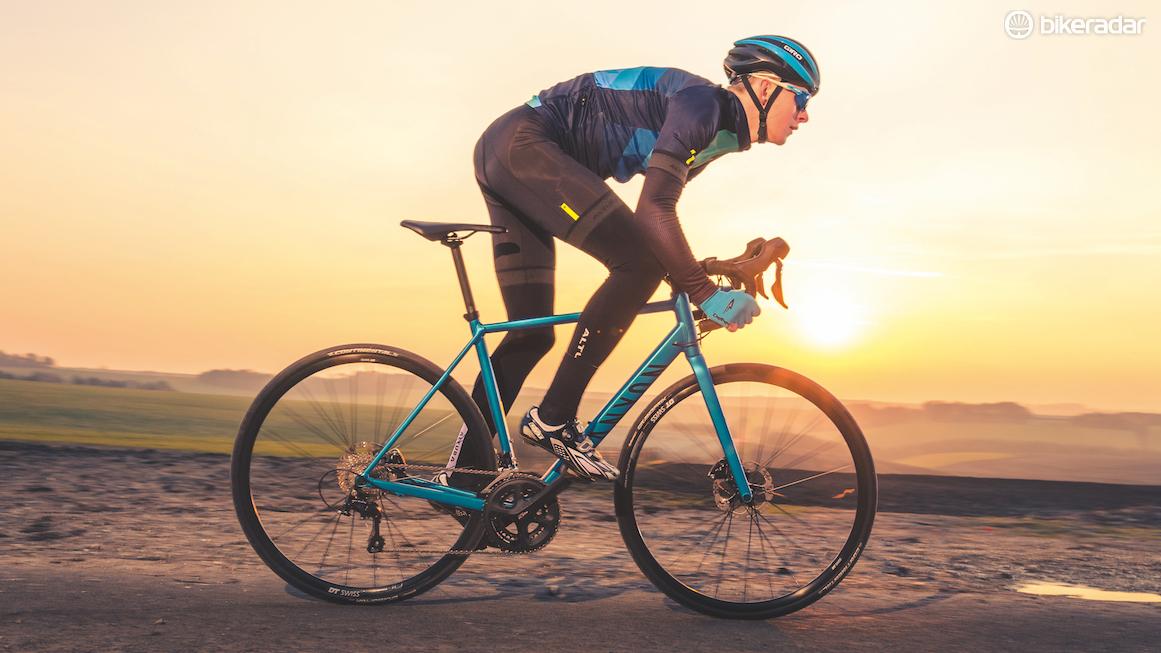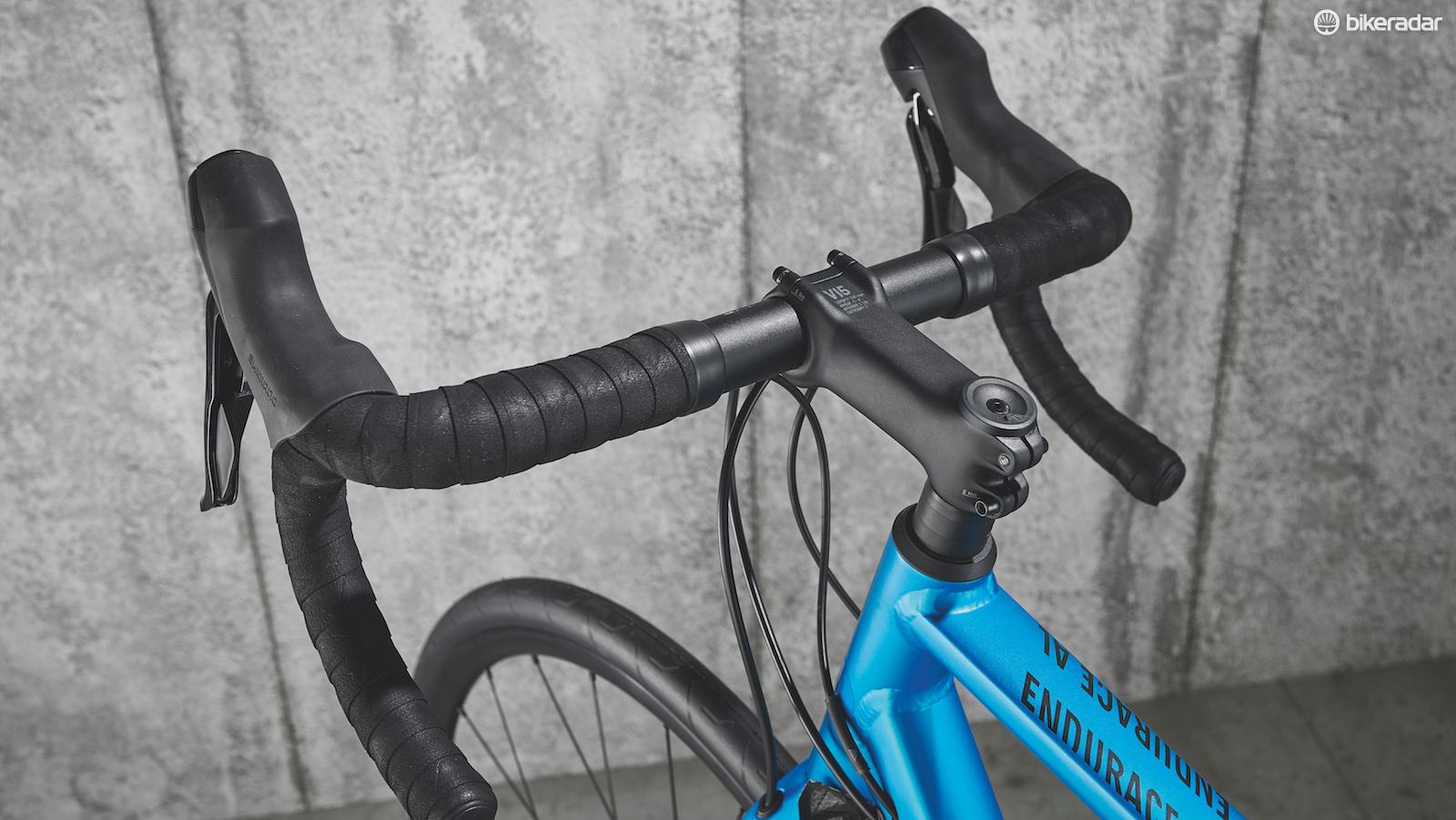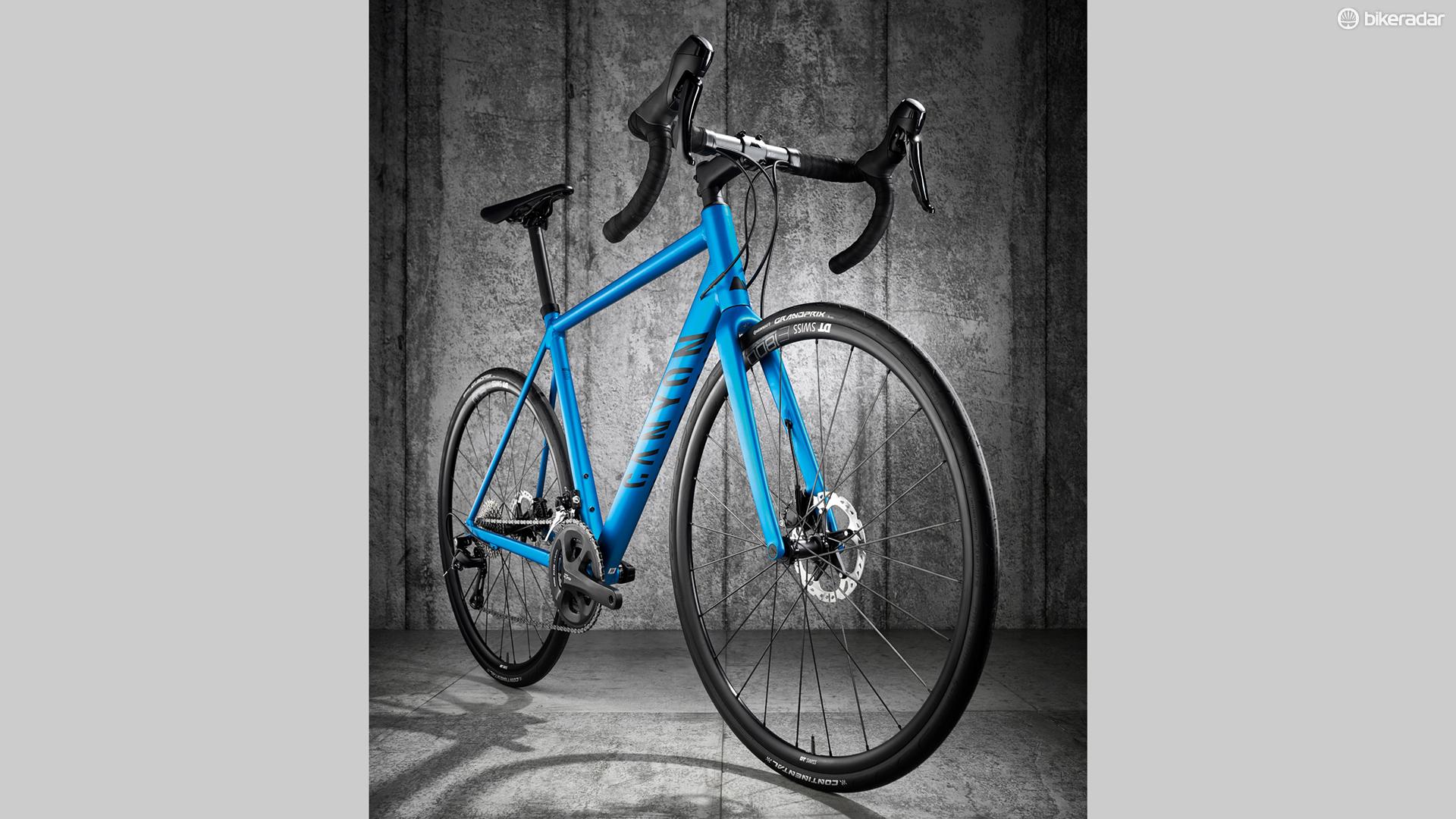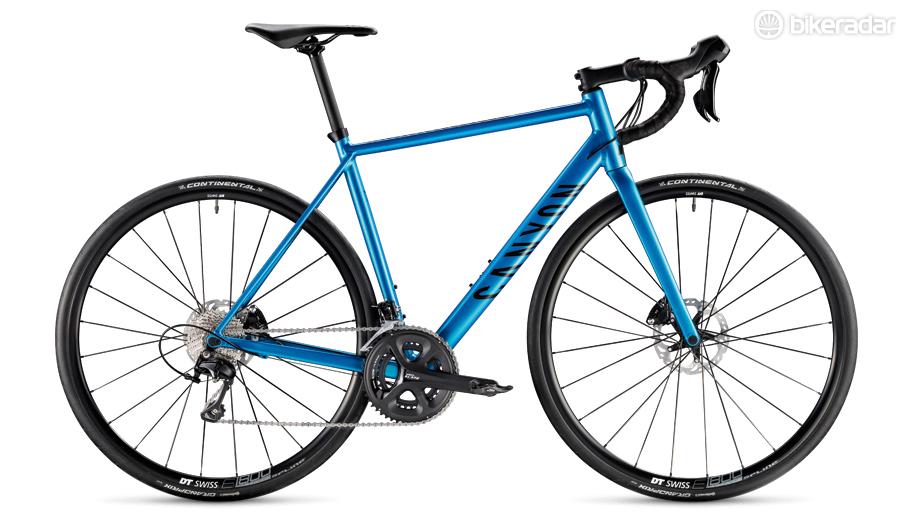You can trust Cyclingnews




This article first appeared on BikeRadar.
BikeRadar verdict: "Agile handling and punchy power delivery, but the Endurance isn't as good value as it was"
- Highs: Beautifully clean-looking frame with big clearances and punchy performance
- Lows: Not as good value as it was, no mudguard or rack mounts
- Buy if: You want a capable disc endurance ride with the option to run bigger rubber
Previous rim brake versions of Canyon’s Endurace bike have won top honours in our tests, and its very clean-looking frame creates a brisk, high-clarity character.
A harsh ride, despite quality 28mm tyres, higher cost than before and lack of everyday practicality count against it when compared to the latest crop of contenders however.
- Canyon vs. Rose: who makes the best cheap disc bike?
- Rose Pro SL Disc review
- Best road bikes under £2,000 for 2018
The alloy frame wears its welds proudly but the multi-shaped pressure-formed tubes still look super-clean, right down to blanking plugs for the 12mm thru-axles. At a claimed 1,350g for a medium frame it’s a good weight for a metal frame too.
Signature Canyon features such as the stiffness-boosted asymmetric flared Maximus seat tube are carried over from the carbon Endurace. A lack of bridges on the straight stays gives ample room for the 28mm rubber, and will take 33mm tyres for a more floated ride.

The Canyon gets proper hydraulic discs
Internal mainframe control cables emerge from under the bottom bracket for easy servicing, and front and rear brakes are flat mounted. The full carbon fork has a straight 1.125in steerer rather than a tapered one, and there are no mudguard or rack eyes on the frame or fork, which is an irritating oversight.
It’s clear that the Race part of the Endurace is the dominant gene. The 73/73.5-degree head and seat angles create fast and agile steering for keen pilots rather than relaxed angles for passengers. All the same, with 587mm of stack and 383mm of reach on a medium, the position is not aggressive.
Despite the thin, straight steerer fork it can place the front wheel precisely and transmit all the feedback you could want into your hands. The shifter body ergonomics are questionable, but Shimano’s 505 disc brakes are precise and seriously powerful thanks to 160mm rotors.

Lumpy levers aside, the Endurace is a good looking bike
Continental’s excellent Black Chili rubber compound means the Grand Prix tyres can fully exploit that accurate engagement in all weathers. A sub-metre wheelbase also creates a naturally agile and alert ride.
The stiff mainframe, plus tight and light DT Swiss/Continental wheel package give a taut feel when pumping extra watts through the pedals.
Obvious stiffness and combat-ready handling isn’t necessarily a bonus on a bike billed as an endurance racer. Even the large volume Grand Prix SL 28mm rubber on 20mm internal rims can’t disguise the sharp transmission through the frame, and the Canyon clatters along the road surprisingly harshly.
Things improved when we dropped tyre pressures down to 60–70psi, and it should be noted that the DT Swiss wheels can be converted to tubeless with a strip of sealing tape and the right tyres.

Canyon's in-house finishing kit is perfectly respectable stuff
The underlying character trait is still of a very stiff and firm bike rather than a forgiving sportive contender, and momentum and morale soon gets chewed away by rougher surfaces. The lumpy Shimano 505 levers don’t help hand comfort and our test team was also constantly slipping around on top of the Selle Italia saddle.
The price of the 7.0 is £150 more than Canyon was asking for the similarly Shimano 105-equipped Endurace AL Disc 6.0 last year, making the 2018 model adequate but not amazing value once you’ve added £48.98 for shipping and, admittedly, a sturdy and reusable cardboard box.
Our testers weren’t in complete agreement about the Endurace AL Disc’s ride quality and the BikeRadar score reflects this debate. When Matthew Allen pitched last year’s Endurace AL Disc 6.0 against Rose’s very similar Pro SL Disc-2000 (since renamed the Pro SL Disc 105), it performed well, and the current bike is virtually identical albeit a chunk more expensive. It’s worth noting that Matthew was riding a small frame while Guy was on a medium. Although this shouldn’t make much difference, the design of the seatstays is subtly different on the smallest frames, with a curve to clear the rear brake caliper. It’s possible that this increases rear-end comfort slightly.